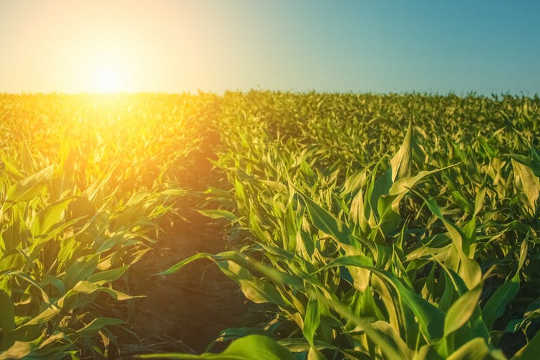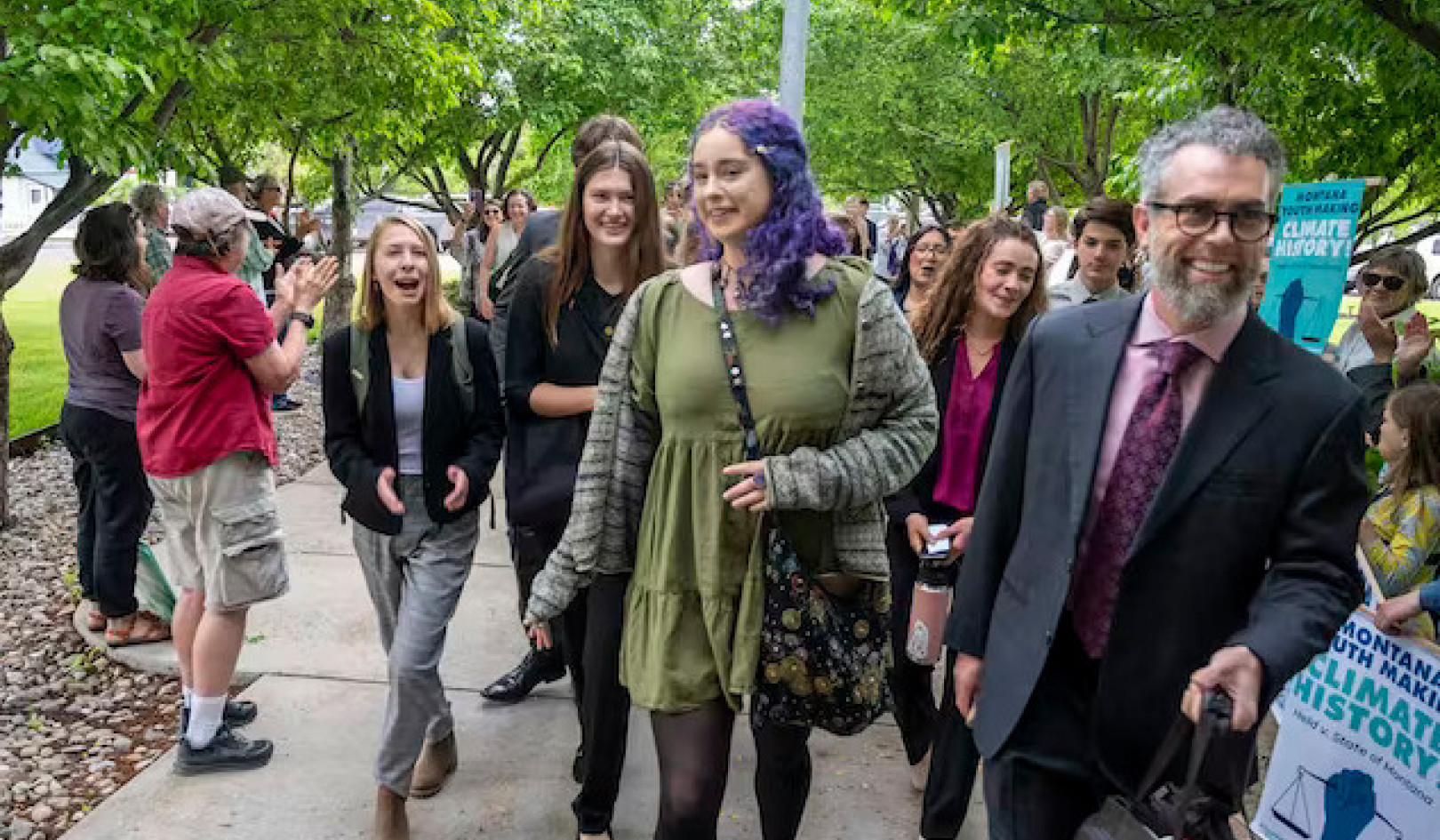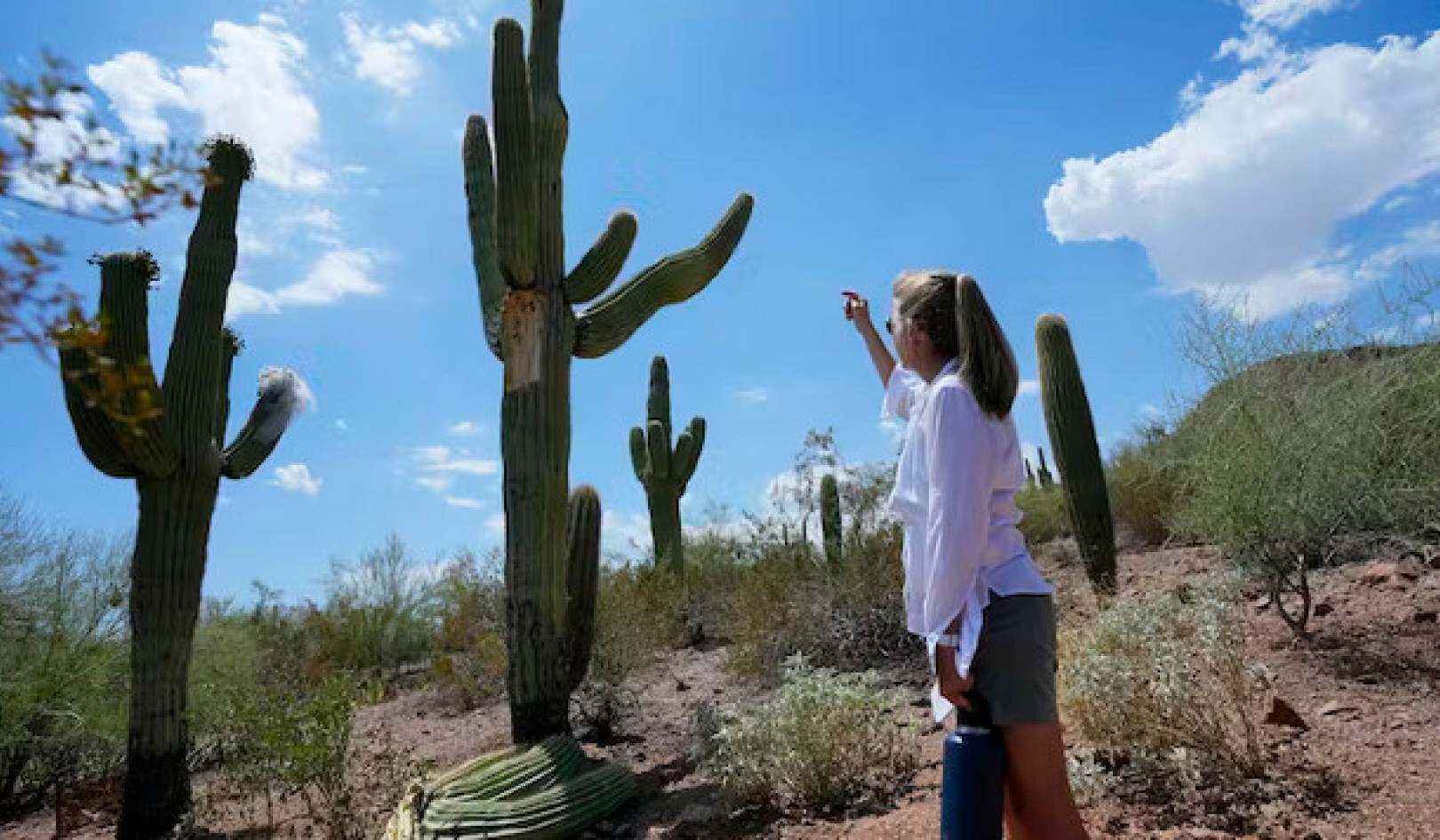Plants have become an unlikely subject of political debate. Many projections suggest that burning fossil fuels and the resulting climate change will make it harder to grow enough food for everyone in the coming decades. But some groups opposed to limiting our emissions claim that higher levels of carbon dioxide (CO?) will boost plants’ photosynthesis and so increase food production.
New research published in Science suggests that predicting the effects of increasing CO? levels on plant growth may actually be more complicated than anyone had expected.
To understand what the researchers have found out requires a bit of background information about photosynthesis. This is the process that uses light energy to power the conversion of CO? into the sugars that fuel plant growth and ultimately provide the food we depend on. Unfortunately, photosynthesis is flawed.
Molecules of CO? and oxygen are similar shapes and the key mechanism that harvests CO?, an enzyme with the catchy name of RuBisCO, sometimes mistakes an oxygen molecule for one of CO?. This wasn’t a problem when RuBisCO first evolved. But about 30m years ago CO? levels in the atmosphere dropped to less than one-third of what they had been. With less CO? around, plants began mistakenly trying to harvest oxygen molecules more often. Today this is often a substantial drain upon a plant’s energy and resources.
As it gets hotter, RuBisCO becomes even more prone to errors. Water also evaporates faster, forcing plants to take measures to avoid drying out. Unfortunately, stopping water getting out of their leaves also stops CO? getting in and, as RuBisCO becomes starved of CO?, it wastes more and more of the plant’s resources by using oxygen instead. At 25°C, this can consume one-quarter of what the plant produces – and the problem becomes more extreme as temperatures rise further.
However, some plants developed a way to avoid the problem by pumping CO? to the cells where the RuBisCO is located to turbocharge photosynthesis. These are known as C4 plants, as opposed to normal C3 plants which can’t do this. C4 plants can be much more productive, especially under hot and dry conditions. They came to dominate Earth’s tropical grasslands from 5m to 10m years ago, probably because the world became drier at this time and their water use is more efficient.
Maize (corn) and sugar cane are C4 plants but most crops are not, although a project initially funded by the Bill and Melinda Gates Foundation has been seeking to improve yields in rice by adding C4 machinery to it.
Most models of how plant growth and crop yields will be affected by the CO? released by burning fossil fuels have assumed that regular C3 plants may perform better. Meanwhile, the RuBisCO in C4 plants already gets enough CO? and so increases should have little effect on them. This has been supported by previous short-term studies.
The new Science paper reports data from a project that has been comparing C3 and C4 plants for the past 20 years. Their findings are surprising. As was expected, for the first ten years, C3 grasses grown under extra CO? did better – but their C4 equivalents did not. However, in the second decade of the experiment the situation reversed, with the C3 plants producing less biomass under higher levels of CO? and the C4 plants producing more.
It seems that this perplexing result may be because as time went by, less nitrogen was available to fertilise growth of plants in the C3 plots and more in the C4 plots. So the effect was not just due to the plants themselves but also to their interactions with the chemistry of the soil and its microbes.
These results suggest that the way that changes in CO? affect established ecosystems are likely to be complex and hard to predict. They may hint that, as CO? in the atmosphere increases, C4 tropical grasslands could perhaps absorb more carbon than expected, and forests, which are predominantly C3, might absorb less. But the exact picture is likely to depend on local conditions.
Impact on food
What this means for food production may be more straightforward and less comforting than at first glance. These results are from grasses that survive and continue to grow year on year. But current cereal crops are “annual plants” that die after one season and have to be replanted.
As a result, they don’t have the opportunity to build up the soil interactions that seem to have boosted growth of the C4 plants in the experiment. We can’t expect that our food security problems will be solved by C4 crop yields increasing in response to CO? as they did in the experiment. Similarly, the eventual fall in biomass seen in the C3 plots shouldn’t happen in C3 annual crops.
But, as we know, C3 plants waste a lot more resources at higher temperatures, so any increase in photosynthesis from rising CO? levels seems likely to be at least cancelled out by the effects of the global warming it will cause. And that’s without factoring in changes to rainfall patterns such as more frequent droughts. Solutions that seem to be too good to be true generally are – and, for the moment, that still seems to be the case for the idea that CO? enhanced crop yields will feed the world.
About The author
Stuart Thompson, Senior Lecturer in Plant Biochemistry, University of Westminster
This article was originally published on The Conversation. Read the original article.
Related Books
at InnerSelf Market and Amazon
























